Solo Travel Guide & Stories from a 50-Year Explorer | World’s Ultimate
They say, on making a journey, take every step, And so it was with me at the beginning of my solo travel, despite an indignant beat of my heart.
I was not meant to live in an all-too-routine life shut away behind screens. Even with an endless series of clients and projects as an IT professional – a master’s degree, clients, systems, deadlines – that beat would always echo within me for open skies.
Table of Contents
Something underneath computers could not gauge or read. A sort of rhythm quite different from the walls of concrete.
It wasn’t until I reached fifty that I realized I had to listen to that inner voice.
What You’ll Find in My Solo Travel Journal
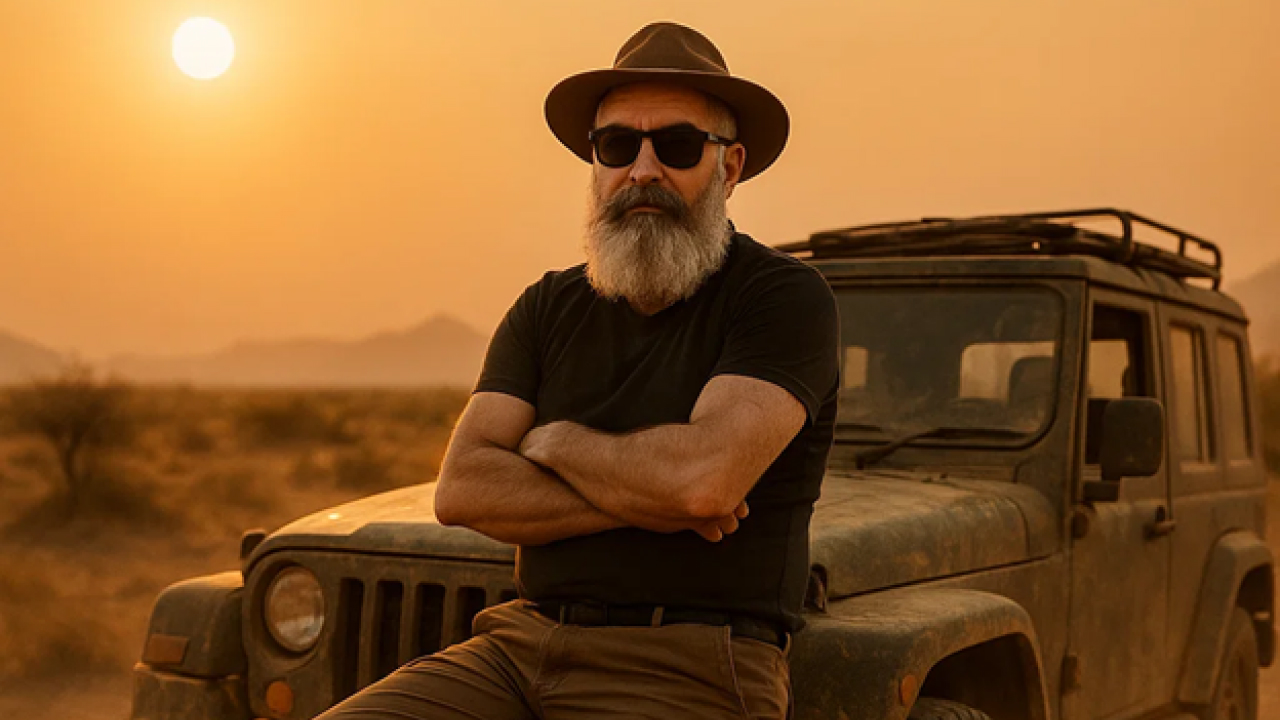
Here’s everything that made my solo journeys unforgettable – and I hope it will help you shape your own path too.
- Solo Travel Guides – Practical Routes, Safety Anecdotes, Hidden Places & beyond
- Eco-Travel Lessons – how to travel responsibly, support local communities and create journeys that make a positive impact.
- True Travel Stories – momentary bliss, defeats, and epiphanies from deserts, mangroves, and forgotten towns.
- Off-Road Adventures – stories about deserts, coasts, and places on the road where few travelers will ever go.
- A Mindfulness-Travel View – From the Mountains, into Solitude. If you haven’t gone within, find out how it heals. And then there is a way to go anywhere with real purpose.
Except that solitary travel is not a progress report. You do not judge your efforts by how far you have come. I gained nothing from the kilometres on my journey. I will only look at the kind of person I was when I finished it.
Come along with me as I document my solo adventures. We‘ll take things one dusty road, one green idea, and one honest story at a time. This journal is part of my solo travel reflections that shaped who I am.
The Call of the Road – How It All Began
At that time, while I had spent decades plugged into tech, my deepest core nonetheless managed to break out in a tangled embrace with nature and life-formative – the deserts, forests, open highways. Throughout my life, whatever hobbies I took up, there was always an element of suggestion in them – horseback riding, forestry, athletics, dog breeding. These were all jangled together, knotted with the sense that space and nature had for me.
When I was traveling towards my initial experience of wild geography, it did not consist of mileage. It was silence – not the silence you find in emptiness when alone, but fullness. Wind – wandering away from an open window, undressing itself completely for the hot breeze.
But it wasn’t until I left my suitcase behind and departed on my own, full of a sense of freedom for the first time!
As I paused at some mountain bend and gazed along the desert horizon off in the distance, the wind was roaring upon me. I was home! Solo travel became my language of freedom.
I also found that travel is not immediately changing. It will only peel off your layers bit by bit. Each time, at least the event of disappointment is remembered – travel isn’t perfect, when the wheels of your car sink into the sand in a desert world. When you trek along hiking trails without phone signal, no comfort at all, just instinct. It rewards you for laughing with strangers in a place where nobody recognizes your face.
You can hear the message it carries through the tires’ crackling over that field of gravel, distinct in the air!
A brand was far from my intention when I began World’s Ultimate. This was meant to be a place for real moments that touch the soul – not luxury travel but connection. Through solo travel I found that connection.
From the raw, unfiltered truth of being a mere dot in what seems an endless landscape. When you have gone through it – really lived it – you won’t look at life quite the same way again.
Deserts That Teach Patience – Arabian (Saudi Arabia)
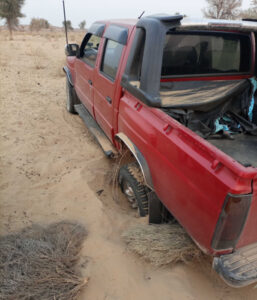
The desert has a way of eliminating our unnecessary thoughts. It does not care who you are, what you have done, or what your next step will be. It strips away all that is unimportant and brings you right back to basics. The first time I faced the Arabian dunes, I realized that patience was not merely an attribute but survival itself. Solo travel makes you face this truth directly.
Driving a 4×4 vehicle across endless deserts is a humbling art. Sand isn’t firm ground; it is shifting, changing, and obstructing. You cannot defeat it; you can only learn to dance with it.
My mind flashes back to the steering wheel quivering in my hands as tires dug deep into soft dunes, the engine struggling to carry the burden of heat. The horizon wavered like a mirage, but there was no fear, only surrender. In the desert, you don’t battle nature; you listen to it.

Every ounce of my composure was strained by the Arabian Desert. I recall stopping halfway there, the sun a molten sphere on the point of sinking into gold waves, the silence pressing harder still against my ears. Standing there alone – perhaps it is because there is no Wi-Fi, no noise, no line of division between yourself and nature. Just the brb eath of wind moving grains that have existed long before you and will long endure the elements.
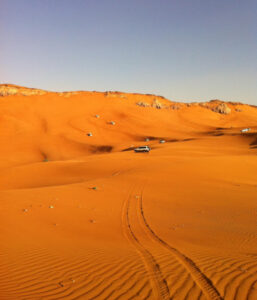
But it wasn’t just the Arabian dunes that formed me – the deserts of Pakistan did too. The Cholistan and Thar deserts have their own tale to tell. They are living cultures rather than mere places.
At dawn, camel caravans with bells like songs forgotten in time still move forward. Villagers sit down in the burning sky to drink salt tea, their faces worn out yet smiling. I once found a group of nomads who housed me in a torn cloth tent for my rest. We shared bread baked over embers and stories that required no translation.
It is through these simple human interactions that the essence of travel reveals itself. Deserts teach you to be grateful for the small things – a cup of water, a brief shadow to rest in, a kind deed. It slows time until every breath is felt. I learned more about patience and perspective there than in any classroom or boardroom.
One more time, whenever night approached and stars filled the sky to form a world all its own in which we humans still struggle hopelessly against darkness, I would lie on the sand and look up. The purest theatre of the universe, the desert sky is infinite, brilliant, and makes one feel awfully small.
That is what the desert does – it shows you that time is a mirage. You begin to see that progress isn’t always forward; sometimes it goes inward.
Out here in this empty place, I often thought of the ancient travelers, both merchants and mystics, who crossed these same dunes with only the starlight telling them where to go. I felt I was a part of them, that we were all in one great journey – different eras, same direction of travel.
The American Wild – Out on Endless Roads Freedom
If the desert taught me patience, America taught me freedom. There’s something about the American road – it’s not simply a place to pass through, as the saying goes; it is its own destination. The first time I drove across the vast landscapes of the United States, it felt as though I was taking the heartbeat of a continent built on motion. It was solo travel in it’s purest foam.
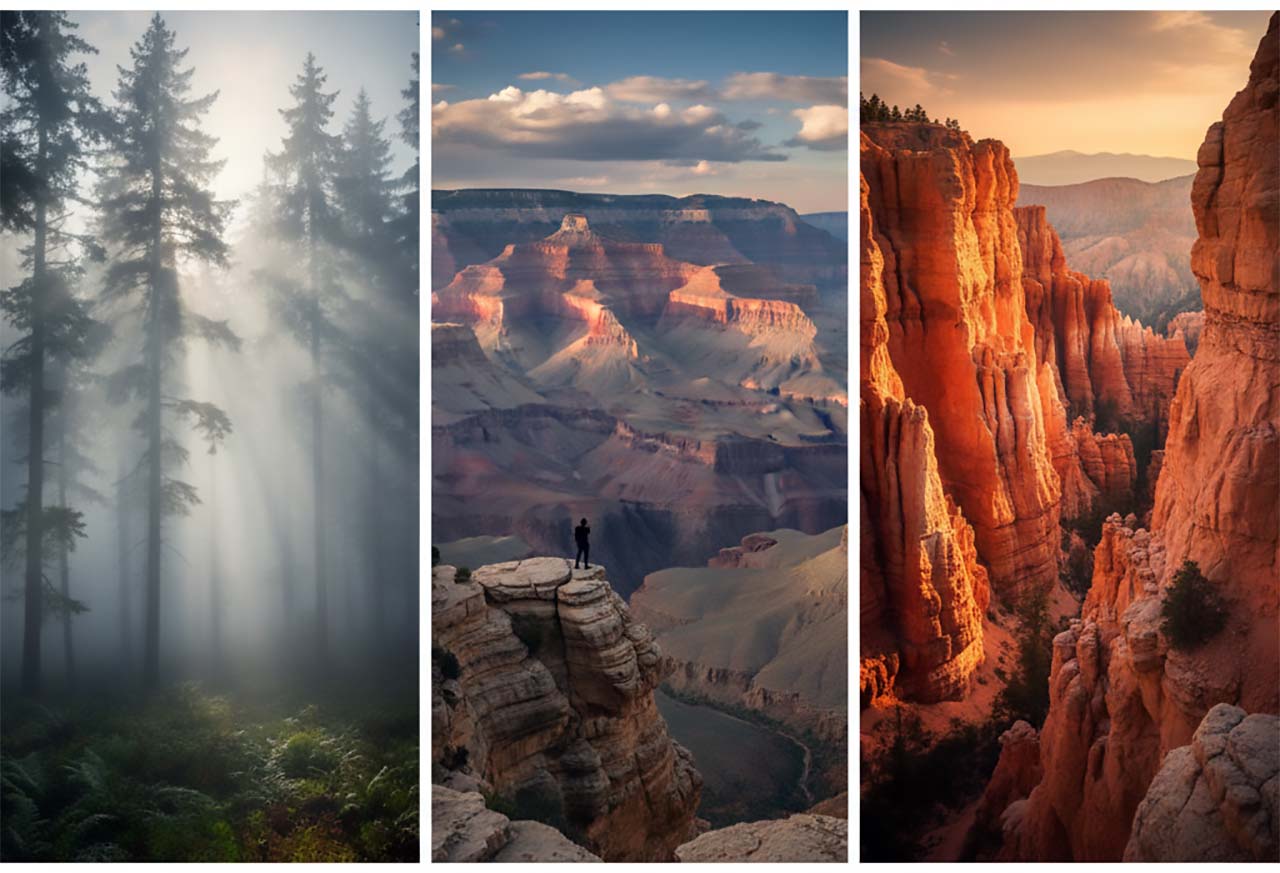
From the rusty reds of Arizona to the endless highways of Texas, every mile seemed to me like a verse in some ancient poem about discovery. The road simply went on and on; we didn’t know when we would reach our destination.
It was the sort of distance that stretches beyond sight, asphalt lines fading into shimmering heat, sky so wide it made you feel nothing but infinite and insignificant.
I used to drive endless hours without ever seeing another human being, only the noise of my tires humming and a steady growl from the engine, and the radio fading into static as the world turned wild again.
That is where the very essence of the American wild lies – in the in-between. To be found between cities and woods, mountains and way-motels, daybreaks and solitude.
I have camped in Oregon’s forests where mists envelop trees like wraiths at dawn. In the Grand Canyon I once stood, gaining rising in my throat, while whole shadows chased across a million years of rock. The canyons that I drove through in Utah were carved by time itself – their walls glowed crimson under the late afternoon sun, whispering stories of wind and patience.

Once in the Rockies, I hiked alone into a valley where elk grazed among wildflowers. Except for the distant call of an eagle and my boots crunching on fall leaves, it was silent. I remember thinking – this is the silence that heals. Such moments define solo travel.
Here, one does not conquer nature; rather, one merges with it. You let its vastness humble you, reminding you that control is an illusion.
Still, the American road isn’t all forests and grace, not at every last turn. The waitress in a Nevada diner who called me “hon” and filled my coffee without asking. The biker in New Mexico who shared his map and told me which desert road was “worth getting lost on.”
The old man in Colorado who said,
“You aren’t traveling until you stop checking where you are.”
Each encounter became one more chapter in my journey – the tiny, human moments bound up physically as well as spiritually with a larger unfolding adventure.
What struck me most about America was its contradictions-wild yet orderly, modern yet ancient, desolate yet hospitable. It is a nation that celebrates movement, but for the individual in transit, it’s a mirror to search your meaning in motion. You begin to realize that every road trip isn’t about reaching somewhere – it’s about losing what no longer matters.
Somewhere between the Pacific Coast and Route 66, I felt the familiar stillness again. The kind that started in the deserts of Arabia and Pakistan. It followed me like an invisible compass, whispering that adventure isn’t about collecting destinations, but about collecting awareness.
The American wild changed me. It taught me that freedom is not the absence of limits – it is to embrace them. Drive on until that road is gone and trust that the next one will appear when it’s meant to.
Whispers of the Forest – Canada’s Living Silence


If deserts are where patience is learned and roads are where freedom is won, then forests it is that one’s own place in creation is discovered. Canada was never on my bucket list – it called me quietly, like a forgotten dream. When I finally came through solo travel, I understood why explorers, poets, and wanderers always spoke reverently. They are not only landscapes; they are living creatures themselves.
My first encounter was in the dense wilderness of British Columbia – towering cedars, thick moss underfoot, and the smell of rain even when it wasn’t raining. The forest had a pulse, a rhythm of life that one can’t capture in photographs. Every step felt like an intrusion and an invitation at once. I have learned quickly that out in the wild, you don’t lead – you follow.
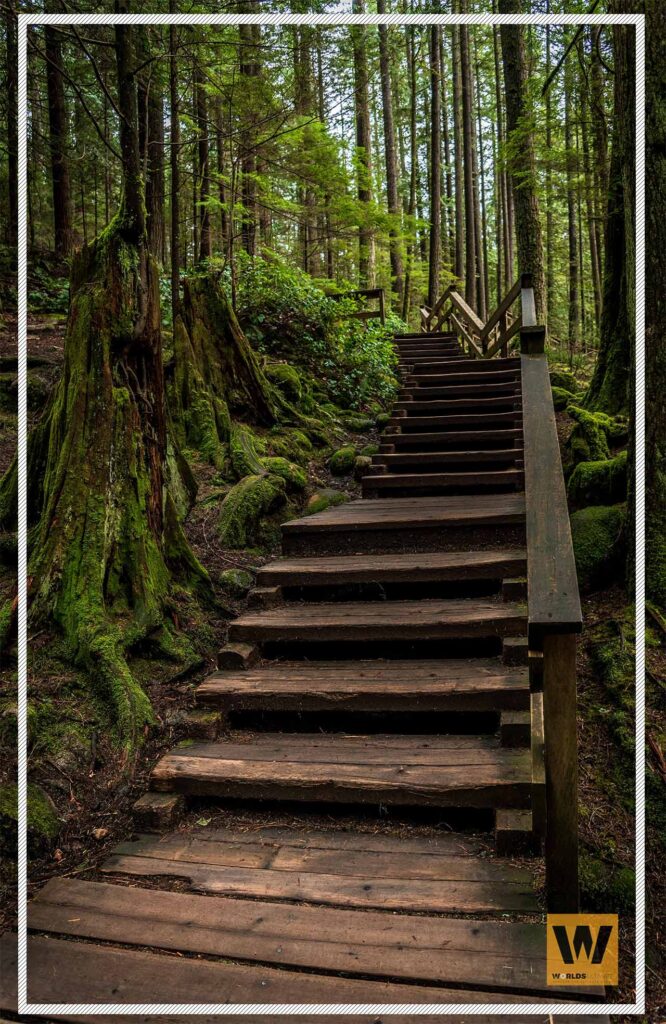
I would wake before sunrise, the world wrapped in silver mist. The forest floor would gleam like glass, and the air was so clear that it almost hurt to breathe. The calls of birds, the distant crackle of branches – it was like the earth was whispering in a language I once knew but had forgotten.
I have a particular fondness for trees. Maybe it is due to my forestry background, maybe because they remind me of the passage of time. In Canada, I visited ancient forests whose trees were older than the greatest civilizations. I would run my hand over the bark and try to imagine what stories it might tell-whether of maturing in storms, enduring fires, or simply living through the seasons.
In the Yukon, I once got caught by a sudden rainstorm while hiking. The trail became slippery underfoot, and visibility was reduced to zero. For a brief spell, I was utterly alone there – no signal, no compass in hand, just what my senses told me. That’s when solo travel showed me what true self-trust feels like.
Yet as the storm cleared, I looked up from a ridge to see nothing before me but the pine forests stretching forever into the distance. It was in that quiet that something shifted. I saw that solitude wasn’t something to run away from – it was something to cherish.
The Canadian wilderness is patient and slow. It shows you that you’re not the center of the world – but one small breath in its vast rhythm. There’s something very peaceful about this – the kind of peace which science can’t attain, and cities can’t sustain.
I drove through Alberta’s forests, camping near quietly gleaming lakes and watching moose wade through morning mist. At night, I would light a tiny fire and sit there watching sparks rise against a sky full of northern stars. There would be no sound at all – no engines, no footsteps, just the soft hum of the universe itself.
In those moments, I understood that silence is not the absence of sound: it is the presence of meaning.
Every forest has its voice: In Pakistan, it is earthy and resilient; American forests seem more generous and open, but in Canada, a deep spiritual call brings forth something ancient inside you. You work your way through these woods not to escape the world but to remember it.
Miles intertwine with memory under my wheels, and I realized that the forest had changed me. It softened something in me that the deserts had hardened. It imparted a deep sense of stillness, being neither frightened nor weak. Developments like the growth of trees happen quietly and patiently in ways that cannot be seen or heard.
The forest whispers, and if you listen long enough, you begin to understand that the journey isn’t about discovering new places, it’s about rediscovering yourself in them.
Across Europe – Treasured Roads of History
Europe isn’t just a landmass – it is a vibrant museum. Every town, every mountain, every broken stone has witnessed some event that shaped the destiny of human beings. Wander across Europe and you’ll walk through history itself – sometimes bright, occasionally dark, but always beautiful.
I began in Spain. Here, deserts metamorphose into olive groves; the air carries a whiff of sea. Andalusia greeted me with warm winds and echoes of Moorish verse inscribed in marble.
The Alhambra was like a dream frozen in time – arches and patios glowing under the golden sun. In its silent halls, I wandered, fantasizing about the sages, architects, and wandering scholars who once stood where I stood now, seeking the divine in numbers, in art, in words.
From Spain, I headed northward into France, where vineyards stretched on and on, always in waves of green rolling under the blue sky. Travelling by train was an immense pleasure, as the landscape lived for me in slow motion – sunflower fields, old stone cottages, and quiet villages.
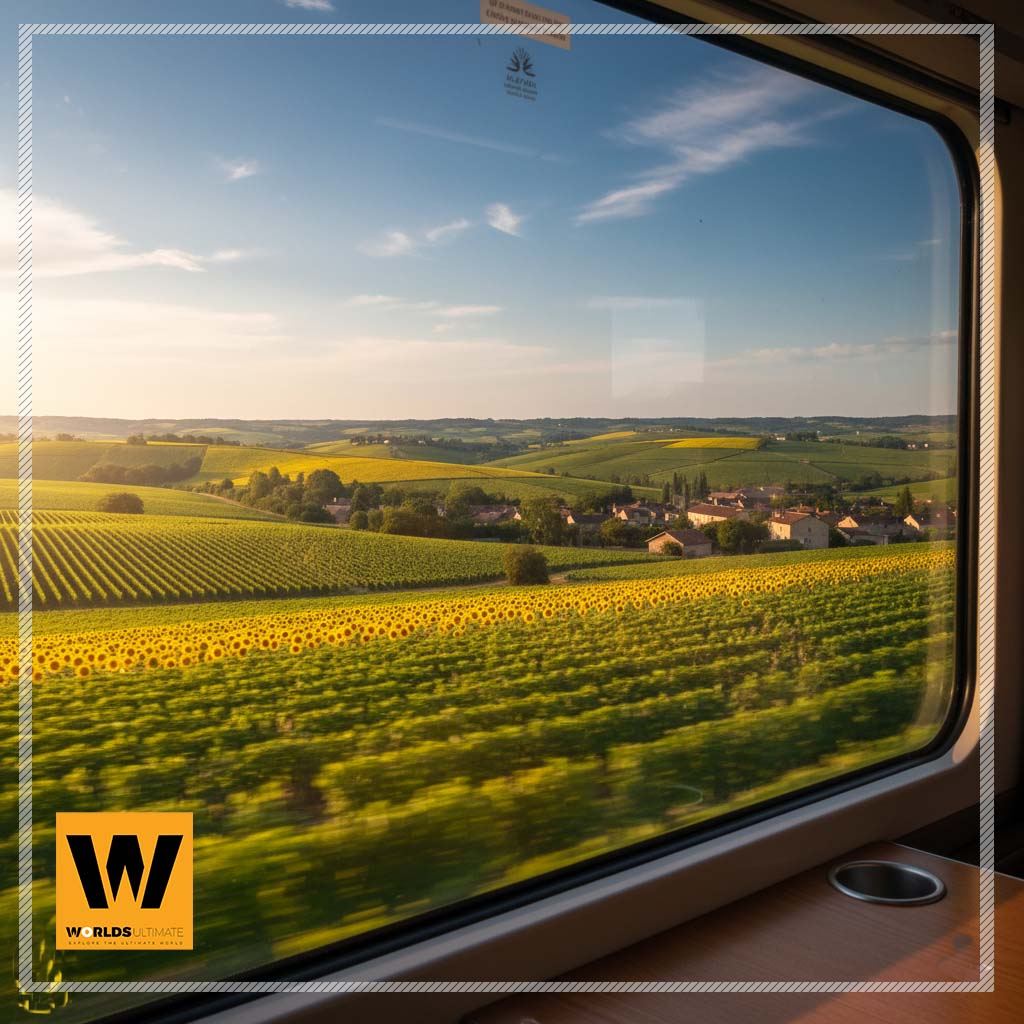
At dawn, Paris is all the poets promised and yet everything they have contrived to forget. Grand and at the same time chaotic: yet intimate enough at dawn when the streets are empty and the Seine glows silver.
However, the very heart of my European adventure lay in Italy – a country where beauty is a way of life. Rome, traffic noise, and ancient walls obtruding everywhere, brought home to me that civilization is both fragile and immortal.
I could stand in the shadow of the Colosseum and feel centuries pressing down like an enormous leaden weight on my chest. But then an espresso at some side café would suddenly yank me back to reality – bustling city life past at top speed, laughter pouring out of narrow streets.
But in Florence, art wasn’t confined to galleries. It lived in the air – the way light touched the domes, how locals paused to listen to street musicians. In Florence, art was as much a matter of atmosphere as it was anywhere else. I’d wander through markets filled with spices and leather, then climb a hill to watch the city glow in sunset’s embrace.
There’s a kind of stillness there that makes you believe beauty is maybe just another form of prayer. Crossing over the Swiss border felt like stepping into a different adventure story – where every mountain looks as if it were painted by a perfectionist. I took a solitary hike along the Lauterbrunnen Valley, waterfalls crashing down like liquid glass.
And it was impossible not to feel small. In that smallness, however, I found a strange power: the power of presence.
When you’re standing before something so vast, you can not have yesterday or tomorrow to think about. Now is the only time at which we live.
Following that, I trekked east through Austria, where the lakes reflect the sky like looking mirrors, and Germany, where woods whisper tales of wolves and wanderers. In Bavaria, I camped near a castle that looked as if it had been carved from the clouds, Neuschwanstein, a place so surreal that it would make you wonder if you were awake at all. But not every journey is about scenery. Some involve people.
In Czechia, I met a young traveler from Japan who was walking across Europe with nothing but a backpack and a small camera. He said, “I want to gather silence.” I didn’t understand it then, but afterward, when I stood in a quiet square in Prague, the city lights shimmering on the river, I knew what he meant.
Europe is something you don’t just see – you feel.
- It’s in the smell of rain on old stone.
- It’s in the laughter ringing through narrow lanes.
- It’s in the timeless rhythm of trains carrying dreams from one border to another.
Because Europe, perhaps, is meant to savor slowly-Not as a trans-Atlantic flight in airplane speaking blanket measurements and seat-back movies, but because the feeling grows stronger of walking with the ghosts that whisper their eye-witness accounts to your every step.
By the time I made it to Scotland, the wind was colder and my heart had grown quieter. The Highlands stretched on in endless green, grey, wild, and untouched. I remember climbing a hill, standing in the rain, and just laughing. Not because of happiness or sadness, but to belong to nowhere yet feel at home anywhere.
In Europe, I didn’t travel – I explored the annals of time itself. Every sunrise seemed ancient, each sunset sacred. And as the last train neared the edge of Europe, it suddenly occurred to me that travel isn’t just a question of adding destinations on your map. Travel is how you learn about yourself.
Wave of the Wide Plains – Africa Whispers In True Safari
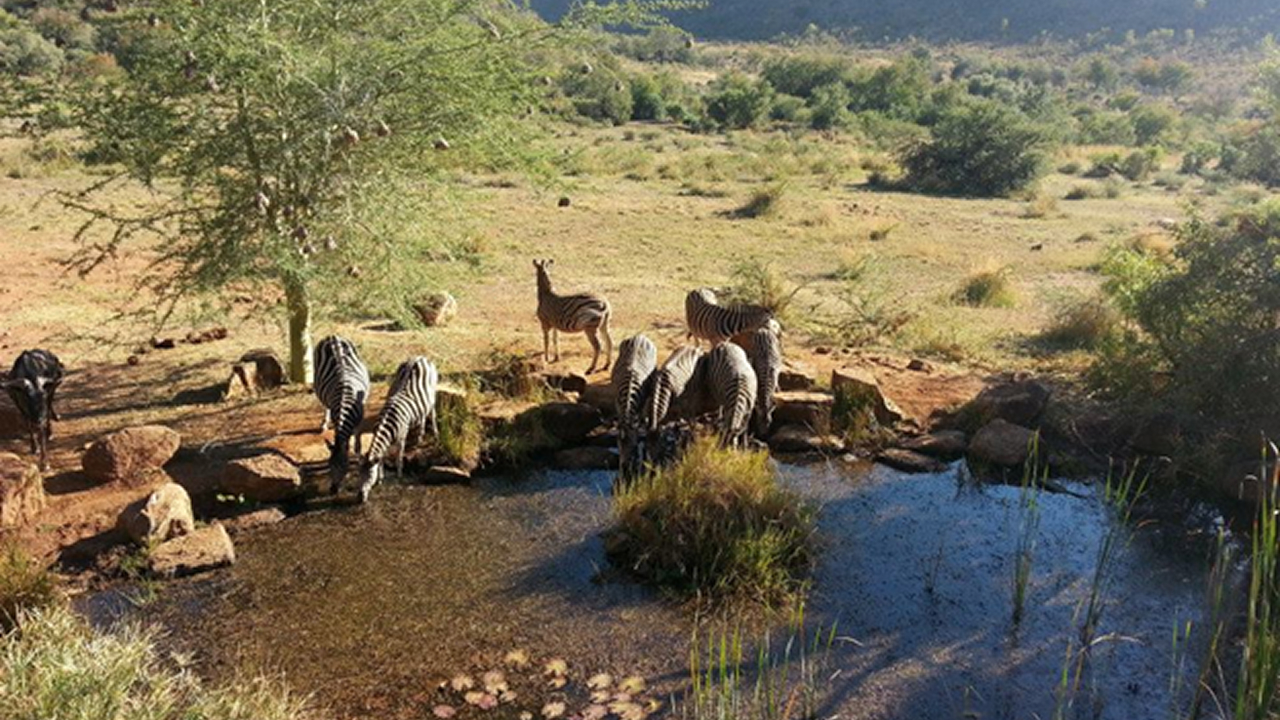
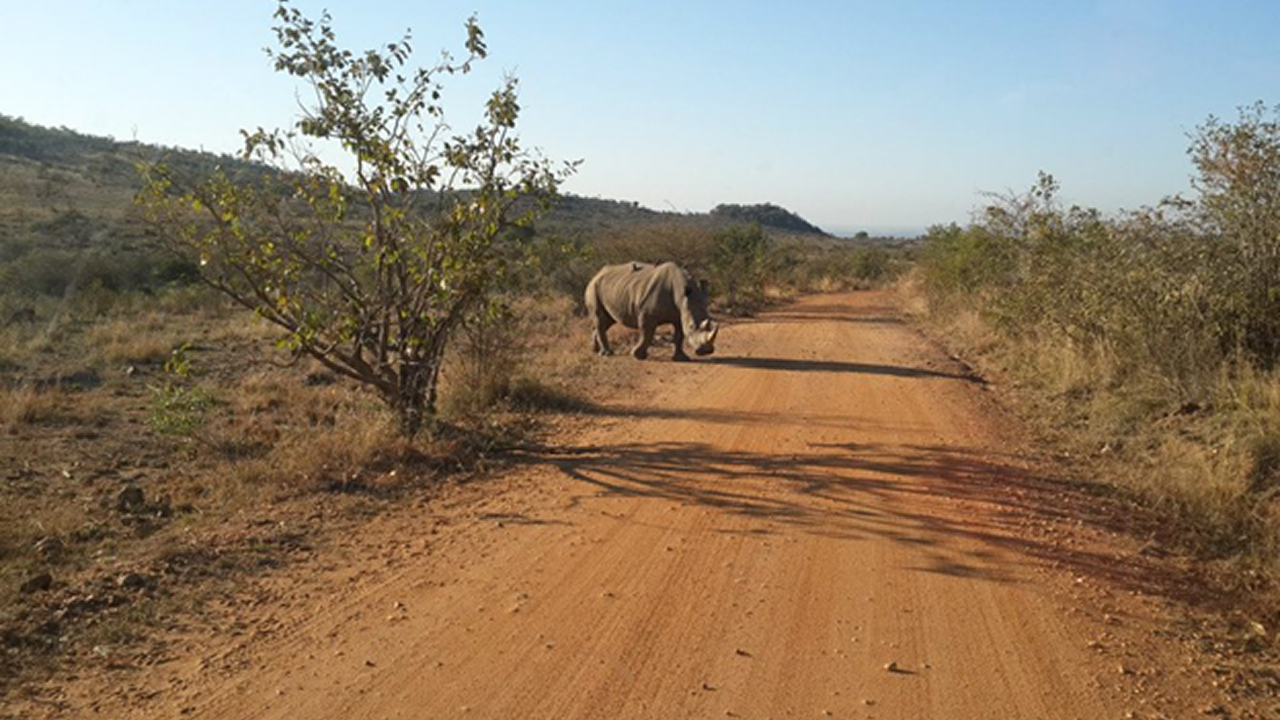
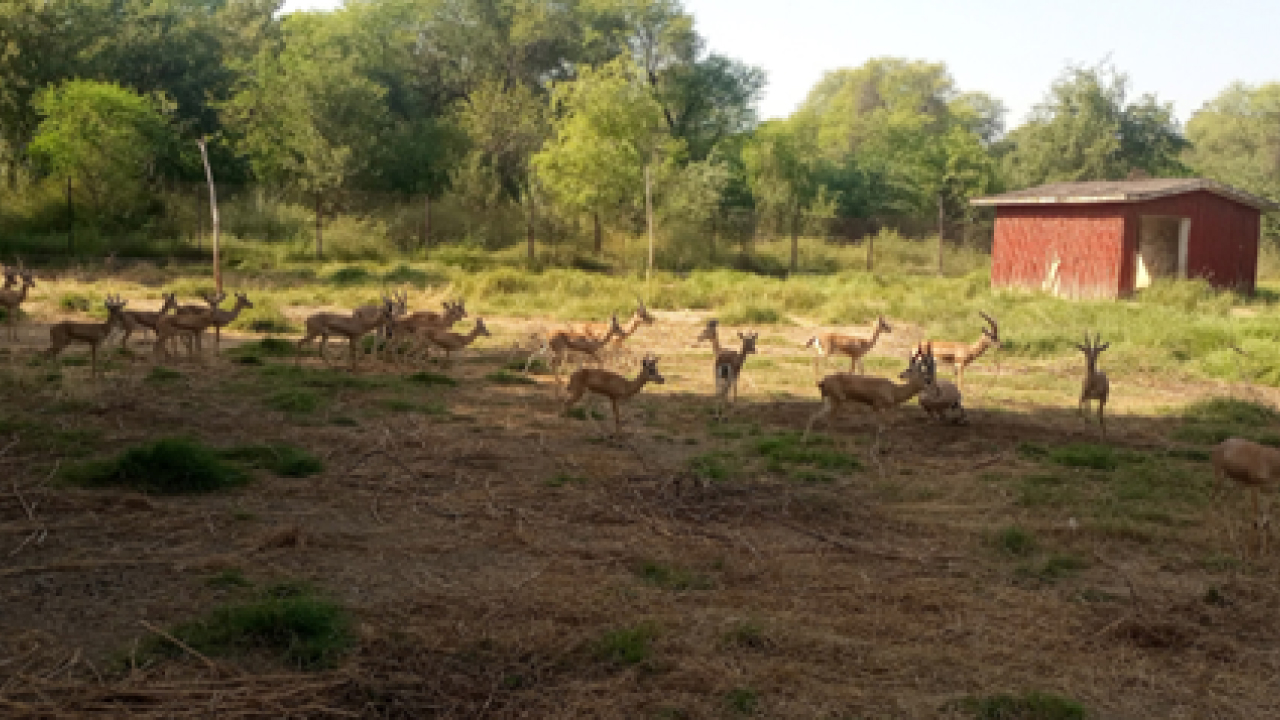
The horizon swallows the African sun – slow, a golden conflagration that feels like the earth is breathing out the life it gives. I recall my first night in the Serengeti, I was standing by a fire that blazed only inches high and listened to as creatures receding sounds then surged again.
From lions roaring to birds and crickets drumming all over the place, the wind up through acacia trees. The sky was not just vast – it seemed infinite, covered with stars that appeared close enough to touch.
Africa doesn’t ask for your attention; it demands surrender. Every sense is amplified. Every breath feels earned.
Through solo travel missions, I had to drive across the savannah in Kenya, Namibian dunes, and South Africa‘s reserve lands taught me that it’s not about chasing danger; it’s actually about being alive in its most unfiltered form. Nature is indeed fresh and straightforward like that. But don’t make any mistakes: you either learn to adapt or just watch.
Where the dunes pile up in the Namib Desert like waves from an ocean turned stone – huge, orange mountains all carved away by centuries of wind.
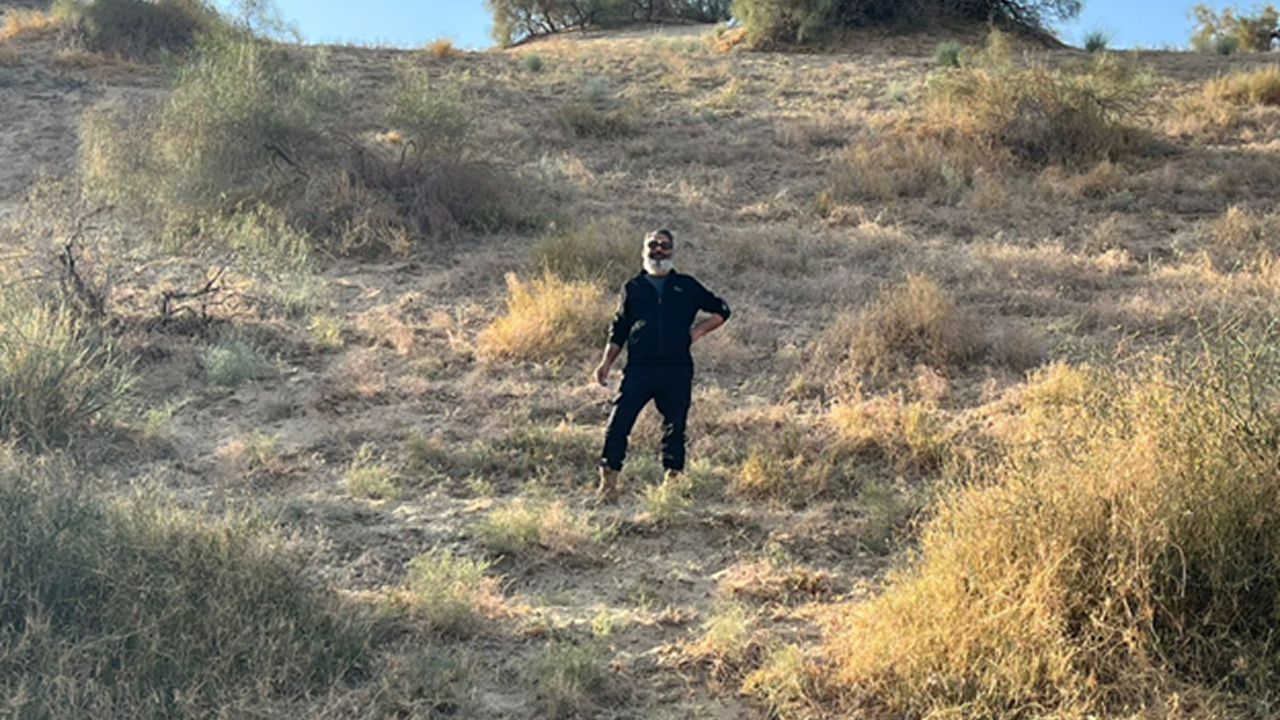
My jeep drove a path through emptiness itself; the tires beneath it could feel that living heartbeat of our planet. There’s an odd beauty in desert silence – it’s the kind that requires you to face up to yourself. When life takes away all the noise, your thoughts, fears, and dreams are left in front of you to blossom.
Next came Botswana’s Okavango Delta, a vast book of water and land in eternal motion. Paddling a mokoro (a traditional canoe) across these mirror-like waters, I saw elephants wade in the distance and birds cut across golden light like brush strokes on a moving canvas.
For some time, I did not take any pictures – I was simply observing. Because there are certain times when a picture just isn’t enough; they meant to transform you.
Every country has its character.

In Tanzania, the plain lay endless – a sea of grass with giraffe shadows getting here and there. In the morning light, I followed a Maasai guide named Lenkai through serene movement; his weapon flashed only just as the first light struck. “You go too fast,” he said. “If you hurry like that, Africa won’t unfold herself to you.”
The bush time is one more season that we watch from its lap of luxury. Be patient. You can’t rush land. In South Africa, I spent days following wildlife trails around Kruger National Park. Sitting alone in my jeep for hours near a waterhole – not waiting to get just the right shot, but waiting for life to move naturally.
A lioness with cubs crosses the path. A herd of buffalo is stirring up dust as they go. The kind of silence that is louder than sound. But Africa is made up of more than just landscapes; it’s also people. That’s something solo travel constantly reminds you – connection lives even in stillness.
Read More: Safari Travel Spots in Africa
Gathered around small village fires, I shared tales with locals whose laughter carried all the warmth of home. In Namibia, I stayed with a Himba family, and like the desert around us, their hospitality was infinite. They were materially poor, but rich in a different sense; they gave out freely – food, shelter, stories. It taught me again that real wealth is presence, not possessions.
And then there was the Sahara Desert – that great expanse of sand, bigger than imagination. Riding along with a caravan at dusk, camels moved across the landscape in silhouetted black against a red sky. Nights were otherworldly – cold, quiet, endless. I’d lie under the stars and feel time dissolve. You don’t sleep in the Sahara; you listen. The desert itself has no voice – but in its silence that echoes deep down to your soul.
It’s fierce, non-apologetic, and alive in ways that the modern world has almost lost.
Solo travel travel through Africa was not always easy. There were times when I was so tired that I didn’t even care anymore if the car stopped moving, and an occasional sandstorm blotted away landmarks entirely from view.
But every ordeal had a purpose. Every struggle taught me humility – that nature doesn’t bend for you; rather, you must learn to move with it.
By journey’s end, I realized sitting by the fire with dust on boots and stars above that Africa doesn’t just change the way you travel. It changes the way you live. It teaches you to take it slow, to listen deeply, to move thoughtfully. You come out here thinking that you will find adventure. You leave realizing you’ve found yourself – and that’s the quiet triumph of solo travel.
Overcoming Loneliness – The Solitude Within
You won’t hear a soul say that when you travel alone like I do, the toughest thing isn’t getting tangled with jungle vines – it’s meeting up with your silence. The first time I made a lonely trip across continents, I thought loneliness was something to run away from.
I put on one playlist after another and kept the camera busy click-clicking. I convinced myself that the movement meant something. But as the miles stretched out, and people’s faces began to blur, it turned out true adventure really starts where the noise ends – and you’re left with nothing but yourself. That’s when solo travel begins to reveal its real essence.
Loneliness is inevitable.
It’s the quiet between exits on the highway, the dying of radio reception during a long drive, the hotel room where all you can hear is your own breathing. It slips in somewhere between afternoon and dusk, where signs of self-doubt are left behind.
When you’re all alone in the middle of nowhere – either the desert winds howling outside, or the mist of the forest closing in all around – there’s no one to watch, nothing as a distraction, no expectations. The silence grinds you down to your bare essence before it’s all over but the truth.
But over time, I found something shining at the heart of loneliness: Instead of being the absence of something, it turns out to be yet another reminder.
I can remember one evening in the Canadian Yukon, a long way from the nearest town. I had set up camp beside a frozen lake. The world was so lonesome that I could even hear the snow falling. The fire crackled softly, the stars shone white and cold, and all around me there was a deep, vast stillness. But that night, loneliness changed – it turned into a sacred thing.
I wasn’t alone anymore; instead, I was a part of something much vaster and more alive, something that stayed listening.
The sun of the desert, the air of the forest, the winds of the mountain – all talk to you in their own way. You begin to find comfort in your habits – boiling your water in a battered kettle, pitching your tent by instinct, journaling by lantern light. You begin to fit into your own solitude. That’s the quiet gift solo travel gives you.
You begin to see that solitude is not isolation – it’s bonding with the world.
Of course, there are difficult days. There are times when the silence weighs on you, when you miss human voices or a familiar face. I know that feeling: I have felt it on hours-long desert highways, where each mile looks exactly like the last one, and in rain-soaked mountain huts when the fire just won’t start. But those moments don’t break you – they make you.
The thing is not to flee from it – but to listen. Loneliness has things to teach us. It makes clear what really counts, what you’ve been avoiding, and what you have let slide from yourself.
I once spent an evening sitting on a dune. At the horizon, the sky was burning red. I had no signal, no one with me, and no sound except the sound of the sand. However, it was one of the happiest moments of my life. Because I understood a simple thing-you’re never really alone as long as you connect with everything around you.
You learn that peace isn’t the absence of loneliness; it’s the ability to endure it.
Individually, the self and nature are out of their natural boundaries. One begins to feel as though the earth’s pulses are in sync with your own. And that – as anyone who has ever experienced solo travel can tell you – is when the real magic starts to happen.
From a passage across maps, travel suddenly becomes a journey inward. Besides, when I travel alone now, I don’t fight that silence anymore. I’m glad it happened. Actually, in that silence of the forest and the hum of the highway, I had found a most unexpected companion – myself.
So if you ever feel afraid of solo travel, remember: solitude is not your enemy; it is your comforter. It tells you who you are when the world stops looking. And once you have said goodbye to that path called alone, you will no longer fear solitude.
Shore of Solitude – The Call of Beaches
Lives isolated in remote places where few people can perceive their identity are closely linked to the sea. It happened that most of the souls living intimately with nature and making art, music, literature, or science were there.

The desert learns patience from you; the forest gives you peace and freedom. The road teaches how to be alive; yet when the beach brings together movement and calmness, where waves break against a tract of sand, there is no more powerful place for an individual traveler. In such a place, every wave tells stories, and each new dawn lights up a constellation of fresh possibilities.
After months of traversing parched land, dunes, and forests, my first glimpse of the beach was in Florida. I stepped onto the white sand held under a Florida sunrise; the cold waves beat at my toes, and something in me changed. The ocean doesn’t string you out – it rewards your presence.
Beaches are masters of contrast. The coast presents beauty in movement: the ebb and flow, salt spray, the everlasting wayward wind that makes you feel at peace – but harms too. Shells left with the receding tide, seabirds return to their nests at twilight sky and calm spreads far in Laguna Beach, California.

I hiked from cliffs overlooking turquoise coves to hidden coves where sea turtles had nested during the night. I learned to walk softly, stepping over sea glass and listening instead to the sound of waves breaking on stone walls. The golden light there is still like a painting in the process. The hues change.
The beach mood alters every hour on the Gulf Coast. Further south, I found Siesta Beach. At midday, the coastal atmosphere was all about relaxation. Residents took turns breathing between swells, children chased waves, and fishermen threw out their lines at dawn from piers.
I walked miles barefoot, looking for clasps and cast aside designs, recognizing the shore as both retreat and performance stage for human lives. Crossing oceans, I took up residence at seacoast ports in Panama City Beach, Florida, and trotted out towards pastel skies in early morning. That spread of water to the end of the distance on my return trip gave me time for reflection there.

Travel isn’t always from point A to B – sometimes it loops backward like a circle, always back to some principle or throwback memory.
But beaches are not always postcard material. They can be dangerous, sudden currents, changing tides, and storms. Travelers venturing out on their own must respect the sea just as they respect deserts and forests alike.
I’ve blazed trails across mangrove groves after storms, mended equipment that has been soaked with sea spray, and learned to interpret tide charts as I once learned to interpret dunes in Cholistan. A peaceful evening can turn ugly in minutes.
There’s culture on the shore, too. For example, in fishing villages, people coordinate their day with the rhythm of the ocean. In Myanmar, I enjoyed the taste of crab grilled fresh from the water while fishermen who navigated reefs by stars off Asia’s coast related their adventures.
On the European coastline, I watched young surfers outrun freedom by chasing waves as though they were shackles. The end of land commences: clans of fishermen, barefoot pilgrims walking towards dawn with salt-crusted lips, roamers who make camp between the local dunes – all with sea salt on their tongues and solitude in their hearts.
Beaching it alone calls for certain measures of restraint. For instance, after a long walk comes midday swims, and then at sunset, semi-fleeing back into the cleft. But do not stopover at luxury beach resorts: the real lesson lies in secluded beaches, sheltered coves, silent piers, and tides before your eyes.
To travel shorelines alone means above all realization: water is the sculptor of land, but also human beings. The beach is where you take refuge from life’s fury to let things settle down.
Shooting beach life mindfully is more than just taking pictures. It’s about waiting: for the light to change, for waves to lie down and be still, for sea creatures to emerge again after stormy weather. It’s about laying the camera aside and tasting the salt in your nostrils. At the beachside, let your skin entertain that taste memory.
It is a place that reminds you with every wave’s approach, every departure – that all endings herald the resurgence of life. The starting point you leave behind when you next travel is very often found in those grains of sand.
The Traveler’s Spirit – Awakening the Wanderer Within

Every traveler will at some point experience a moment when the familiar disappears, to be replaced by things unknown, which are beginning to shine with new opportunities. It is just then, whether standing at the brink of a desert dune or looking out over a foggy Canadian lake, that you realize what solo travel truly means.
In every place I find-whether the Arabian desert or the icy silence of a European alpine forest-whispered to me a single truth. Those who take the untraveled path not only discover new places but also parts of themselves that lie dormant within established safety. That is the quiet gift of solo travel.
When you walk through a caravansary alone, it sharpens the discovery. Every sound, every face, every aroma becomes enlarged. You are not distracted by talk or comfort – you are immersed, fully, in life as it unfolds, as solo travel intends.
Before a desert rain, you sense how the wind alters, in the dust of an ancient path, you taste that very grit, silence itself is not void; it has meaning.
I once watched a lone shepherd lead his camels beneath a limitless sky in Cholistan Desert, Pakistan. His life was hard – but his eyes spoke peace. He didn’t seek out points of arrival: he lived in one. And that, I realized, is the nature of exploration. To travel does not mean always on the move – it means seeing deeply.
In the forests of Canada, surrounded by towering pines and the gentle rhythm of snow falling, I discovered yet another lesson. Adventure is not always noisy. Sometimes it’s discovered in quiet moments – when you sit next to a fire looking at the embers drifting out into the night, thinking about how it isn’t necessary to conquer the world; understanding the world is enough.
Europe’s landscapes, from the lavender fields of Provence to the wild cliffs of Ireland, carry stories woven in over centuries. Each cobblestone street, all those wind-beaten castles are testimonials to humanity’s ever-present quest to seek beyond the next hill, sea, or sunrise.
It’s in that urge that lies the spirit of the modern explorer – not a tourist chasing selfies, but a seeker chasing meaning. A person who steps outside his comfort zone to feel alive.
And because travel is a muscle:
The more you use it, the stronger it grows. In time, you’ll be standing at the very edge of where comfort ends and your story begins.
Adventure is not rash. It is respectful. It is to find beauty in randomness; to cultivate poetry through poverty; to go up against the limits and say, ‘I want to understand what there is beyond!’.
So if you’ve ever heard the call – or felt it in your chest – that little whisper that says go – follow it! There’s no need to have things completely worked out. Just set out. A weekend road trip. On a train through a new province. Something as simple as sleeping under the stars.
The desert will knock some of the wind out of your sails. Yet the forest is healing. The mountain trains you to endure the cold – and the ocean will show your spirit infinity. How great, how endless – you truly are. So pack light. Slow the pace. Let your curiosity be your compass. The world is waiting, not for the quickest traveler, but for whoever is most alive.
As you go, remember this:
The map is only a starting point. The real journey takes place within yourself – and solo travel is the path that leads there.
